How to plan a bathroom – a step-by-step guide to creating a sanctuary
Whether it's a bathroom, shower room or ensuite, these top planning tips will help the process run smoothly


- 1. Assess your bathroom needs
- 2. Measure up your space
- 3. Ask the experts
- 4. Choose a layout
- 5. Seek out inspiration
- 6. Be realistic about your space
- 7. Remember, ventilation is important
- 8. Factor in storage
- 9. Consider your bathroom lighting
- 10. Tiles are the easiest way to follow trends
- 11. Mull over your colour choices
- 12. Finalise a budget
- 13. Decide what level of service you need
- 14. Organise your tradespeople
- 15. Survive the work
- FAQs
With so many lust-worthy bathrooms popping up on social media and on the pages of your favourite interior mags, you might be thinking it's about time to give your own bathroom an overhaul too. But if you're not sure how to plan a bathroom, then you've come to the right place.
As with most rooms, it's all about the pre-planning, research and gathering of bathroom ideas. Where once bathrooms were purely practical rooms in our homes, now they need to be so much more, with relaxation and pampering in mind, as we seek to make the most of precious downtime. Plus now we're spending more time than ever in our homes, our bathrooms are getting more footfall than ever, so an update might be on the cards sooner than you thought.
After the kitchen, the bathroom is probably the most important room in the house in terms of resale value, so it's well worth getting it right. It may be one of the smallest rooms in your home, but it can still have a big impact.
How to plan a bathroom
As well as simple renovations, we're also planning more extra bathrooms and en-suites. Whatever your reason, working out how to plan a bathroom is a serious undertaking and can be deceptively tricky. You might be tempted to lose a small bedroom in order to accommodate a bigger bathroom, or simply want to give your existing space a facelift. Whatever project you have in mind, it requires quite an array of fittings and technical skills, often in a very compact space. For this reason, carefully planning from the start will prevent costly mistakes and changes down the line.
'We all aspire to the sumptuous freestanding bath in the middle of a large room with a massive chandelier hanging over the top. However, consider that most bathrooms, even in large houses are no more than 12 square metres,' says Phil Etherden, MD of The Albion Bath Co. 'So, with this amount of floor space, plan carefully and you can still create a stunning result.'
Follow our simple rules and you'll soon be enjoying a bathroom (and freestanding bath) that will be a joy for years to come.
1. Assess your bathroom needs
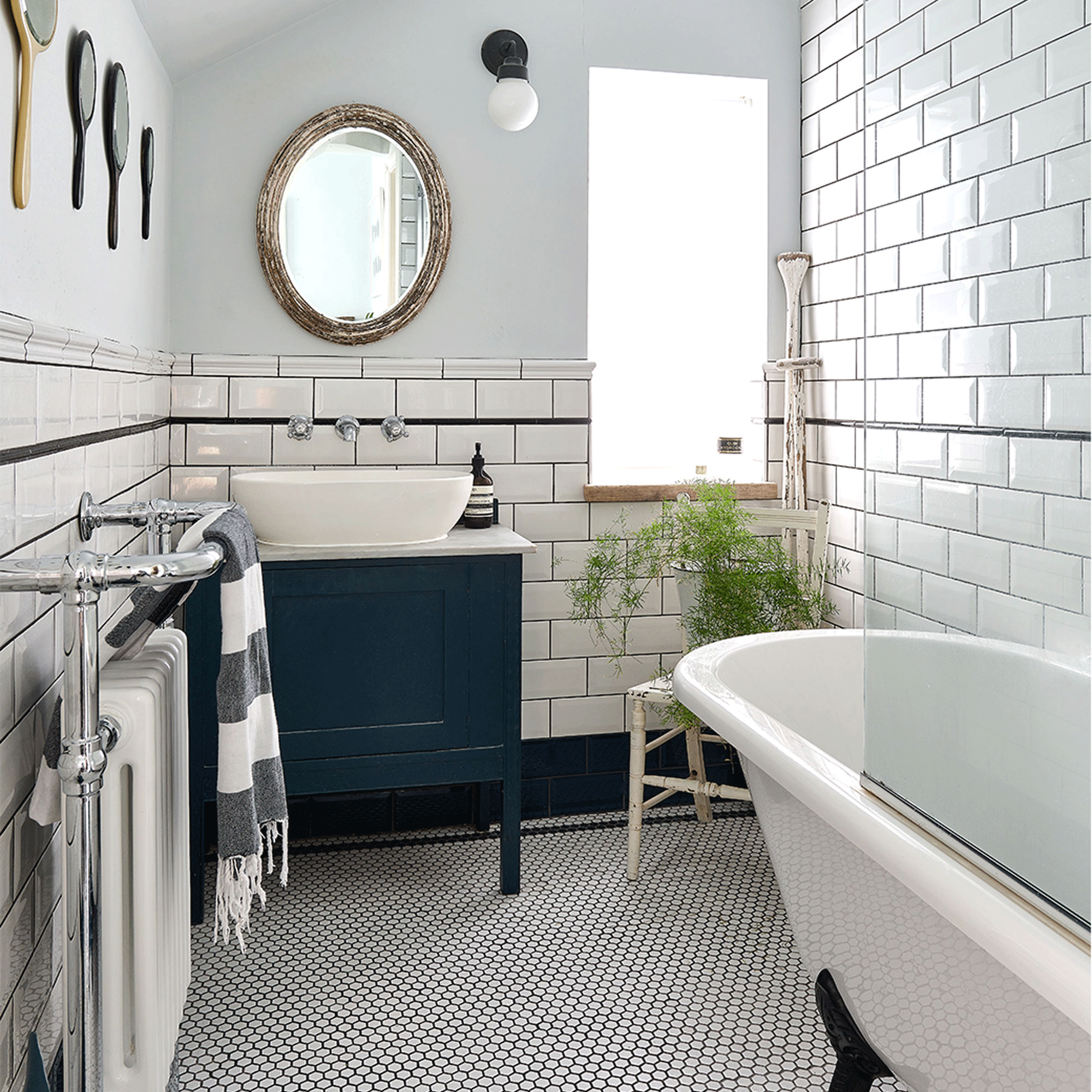
Start by thinking about who will be using the room, as this will have a big bearing on the scheme you finally choose and affect how you plan a bathroom. Is it to be an en-suite shower room for two? Or a family bathroom that will require a bath and plenty of storage for toys?
Sign up to our newsletter for style inspiration, real homes, project and garden advice and shopping know-how
A spa-style sanctuary will require a long list of specifications and fittings that could include a bath, separate shower, double basins, and heaps of storage, including a towel rack or rail, while a guest bathroom may just require a shower and loo.
Next, ask yourself what sort of space you hope to achieve. Are you seeking a haven to escape to, or are you more of an invigorate-and-energise kind of person? This will affect the fixtures, fittings and colour scheme you choose.
‘Forget about how you currently use your bathroom and instead imagine how you would like to use it,’ says designer Hayley Tarrington from Day True. ‘Draw on your experiences when you’ve visited great spas, for example, and visualize how you would like your new scheme to function.’
2. Measure up your space
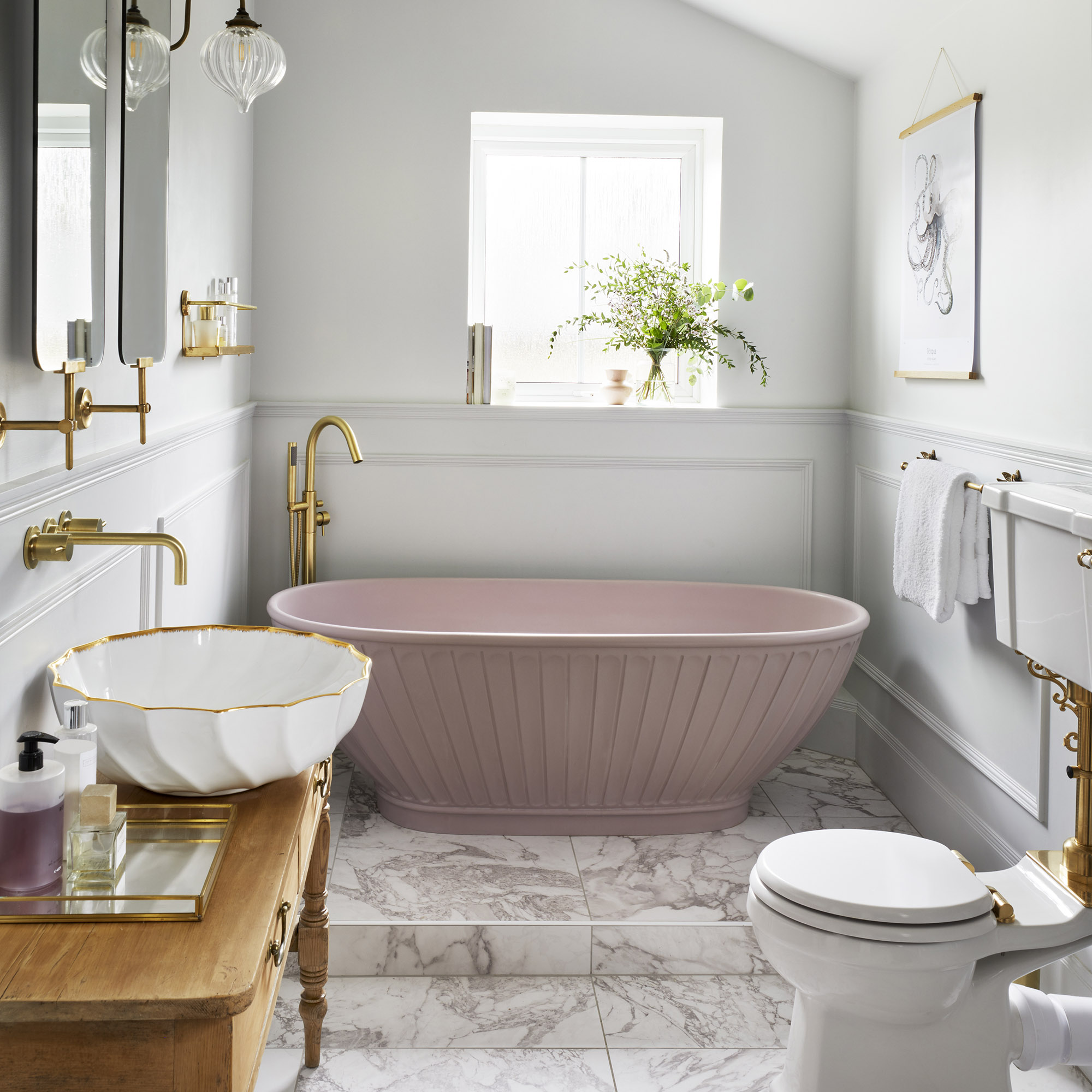
A scale plan of your modern bathroom ideas is a good place to start. Measure carefully as accurate dimensions are key and include features that are likely to affect the design, including windows, chimney breasts and doors.
Cut out to-scale shapes of everything – loo, basin, bath and shower enclosure, for instance – and rearrange them until you find a layout that works best. Incorporate plenty of space between the elements and consider how the room will work with more than one person in there at the same time.
3. Ask the experts
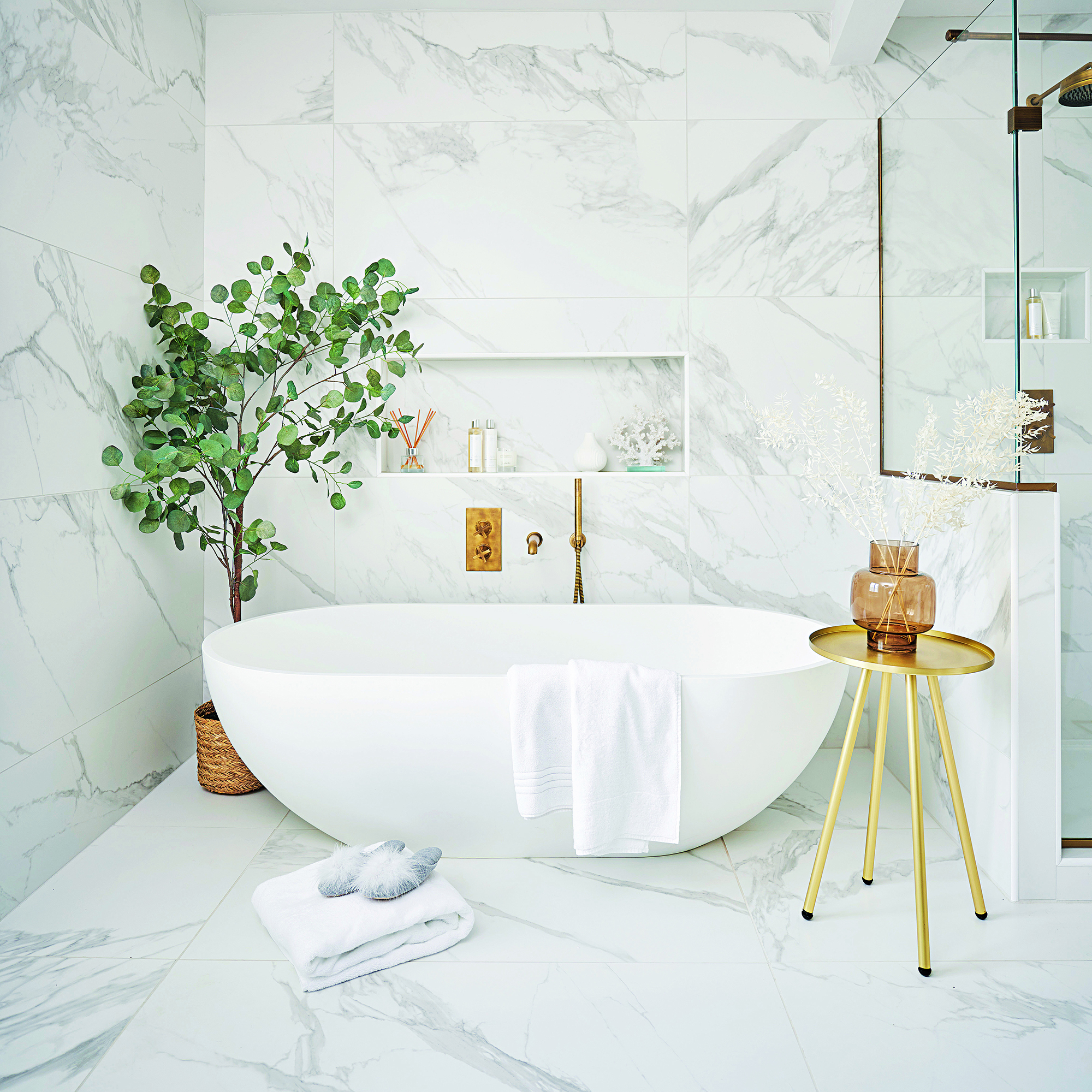
If you're thinking about how to plan a bathroom, it's best to seek out expert advice sooner rather than later. Visit local bathroom showrooms and websites – bathroom designers are great sources of information and advice.
They'll be able to tell you about the latest materials and technology and will have lots of solutions for small bathroom ideas or awkward spaces. They'll also have plenty of experience in maximising space while at the same time minimising costly mistakes.
'Once you have your budget, design ideas, and bathroom plan together, visit a reputable bathroom showroom. Bathroom designers are great sources of information and advice and are perfectly experienced in helping you design and plan your ideal bathroom,' advises Faye Froy, brand expert at Britton
For more practicalities, such as water pressure, soil stacks other planning issues, a builder or plumber should be able to help. Find a recommended tradesperson by visiting Trust a Trader's website.
4. Choose a layout

While it might seem daunting, getting your bathroom layout right from the start will make the difference between an adequate design and one that ticks all your boxes. But don't change a layout just for the sake of it. If it works well for you, keep it. It's a much cheaper option, too, as moving waste and water pipes can be expensive.
Replacing fittings, flooring and tiles or repainting walls is a quick way to get a refresh. If your layout isn't quite right, think about the ways you might be able to make small but effective changes. Rehanging doors or fitting sliding ones is an excellent way to gain space, for instance.
Finally, bear in mind how your needs might change in the years to come. Just because you don’t need a bath in your life right now… it might not always be the case. Your family might grow, or indeed you might be selling, in which case a bath will have broader appeal.
5. Seek out inspiration
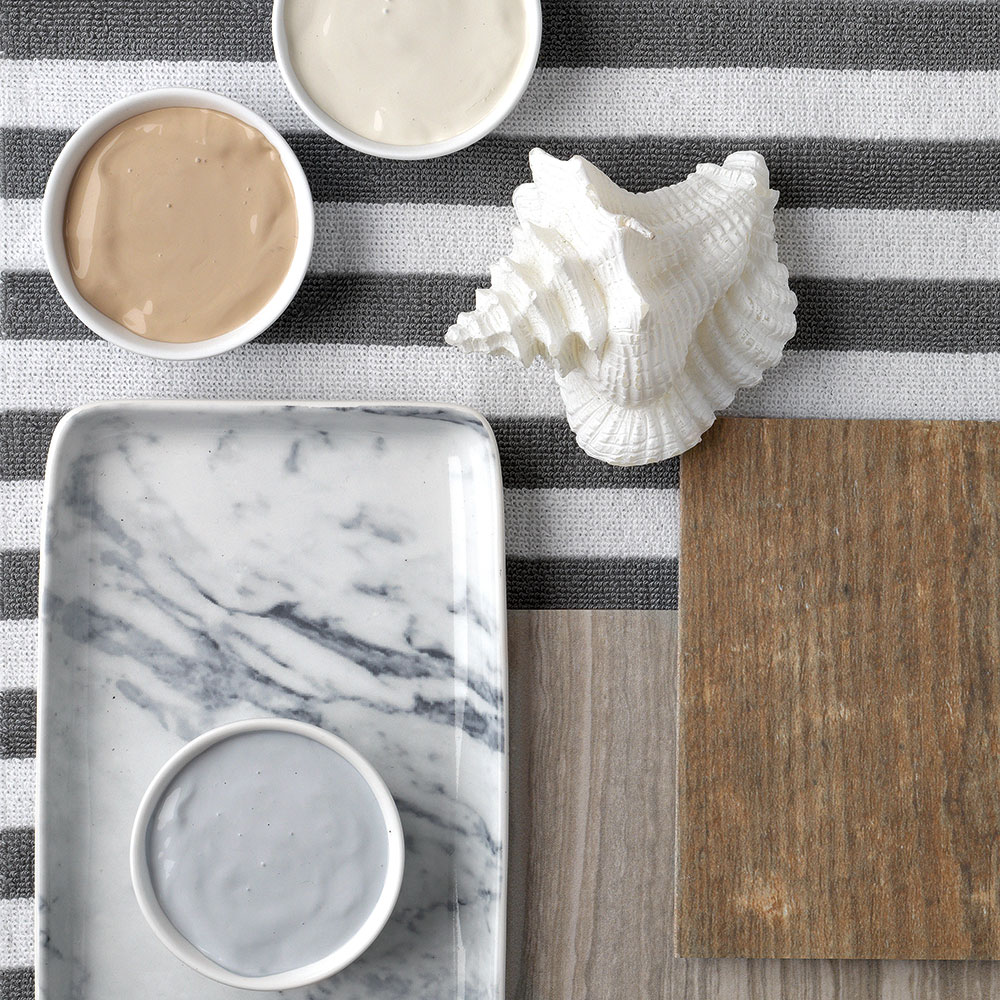
Choose your style early on as this will help narrow down the choice of fittings to consider. Your main options are period style, classic or a contemporary look. Hotel bathroom design is a fabulous source of design inspiration, so scour their websites for looks you love. Quite often they'll feature a lot packed into a compact space, so you'll probably pick out a few layout tips, too.
Bring together a visual checklist of what appeals to you, whether that’s an Eastern Zen look, or something more Scandi-inspired. ‘This will really help formulate your ideas for the look,’ says Hayley from Day True. ‘It’s easier to show someone a mood board to express your vision.’
When deciding how to plan a bathroom, talk to friends who have completed similar projects about what they love about their new bathroom, and discover the pitfalls and problems they may have encountered along the way.
6. Be realistic about your space
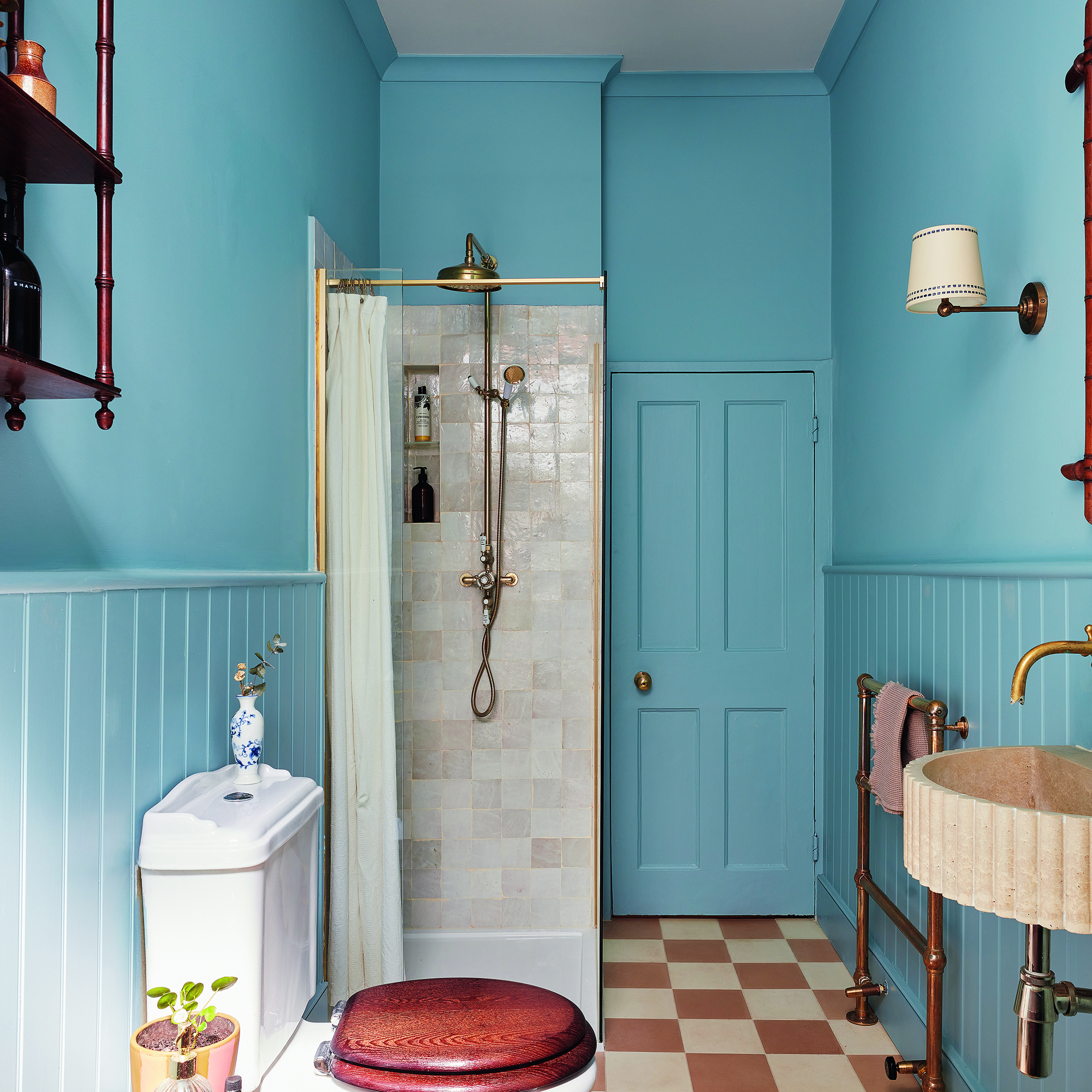
There’s no point pining for his-and-her sinks, a statement walk-in shower or a double-ended roll top if they won't fit. The truth of the matter is it isn’t going to be possible in the most UK bathrooms – apparently the average footprint is about the same as a king-size bed.
'Be mindful of space when arranging your layout, as you’ll need to be able to move comfortably in your bathroom. If the bathroom is on the small side, you can utilise over-the-bath showers, sliding doors, and towel warmers to maximise space,' says Faye
Don’t cram in fittings (this will only make the room feel smaller) and research products that will help you make the most of your square meterage, such as wet-room style showers or Japanese-style square tubs.
'With a smaller bathroom, the trick is to maximise the visible area of the floor, so use a free-standing bath on feet or a plinth,' advises Phil from The Albion Bath Co. 'High Level Toilets will create more visible space as the cistern is above eye level and wall mounted basins won’t take valuable floor area.'
7. Remember, ventilation is important
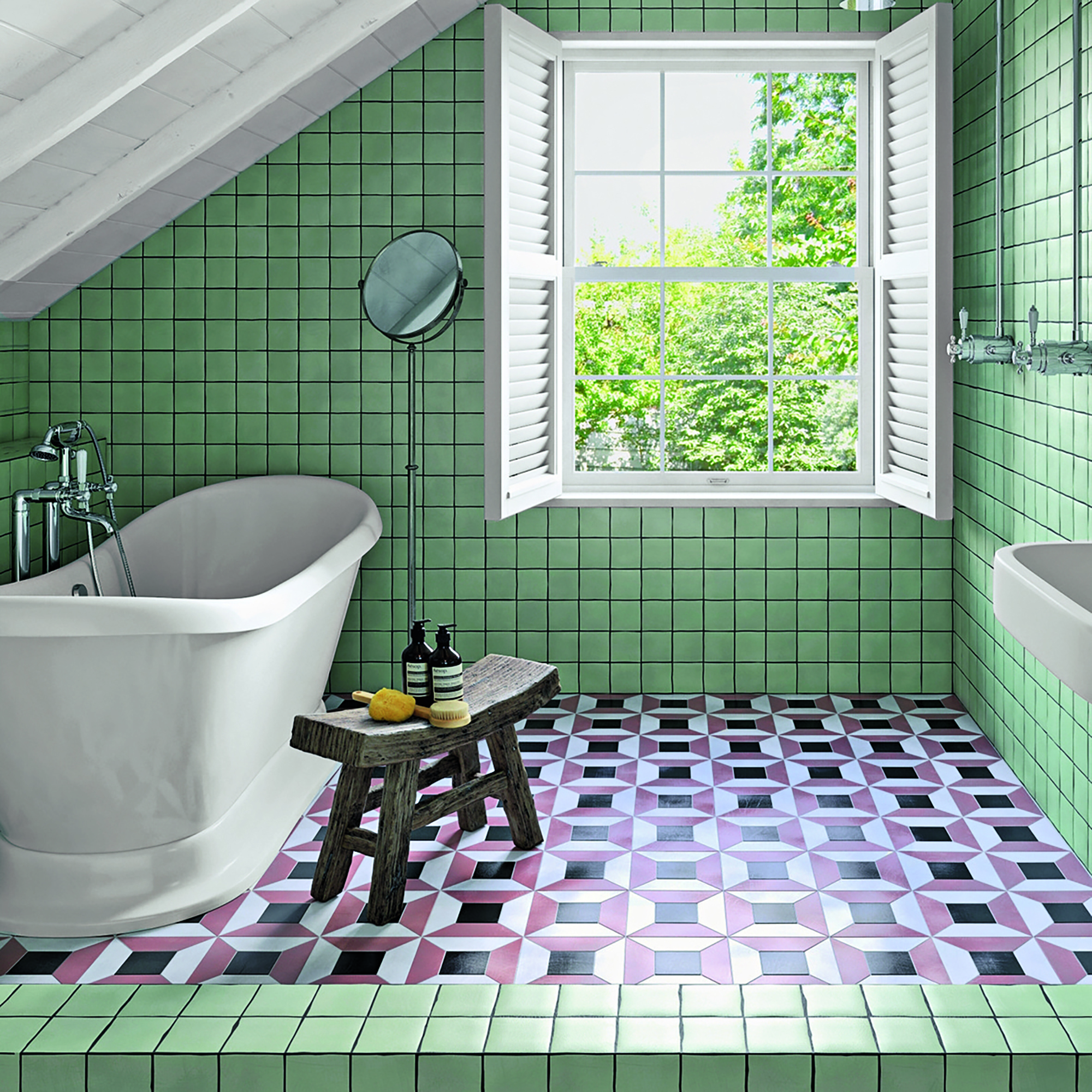
Sam Ball, marketing manager at Utopia Group, often finds people overlook ventilation when working out how to plan a bathroom, only to regret it later. 'it's so important in a bathroom with furniture, as condensation can damage wood,' she says. 'An open window alone is not enough.'
'You certainly don't want the bathroom to become damp, especially an en suite placed so close to the bedroom, which is why extraction needs to be considered,' adds Chris Payne, senior designer at Ripples.
'Make the room well ventilated, as you certainly don't want steam flowing into the bedroom. Nor do you want your extraction to be too loud.'
An extractor fan is a good choice but make sure your electrician wires it in separately to your lighting, so you can control when it is on and off.
Our guide to how to get rid of damp will help you avoid the pitfalls of a damp issue.
8. Factor in storage
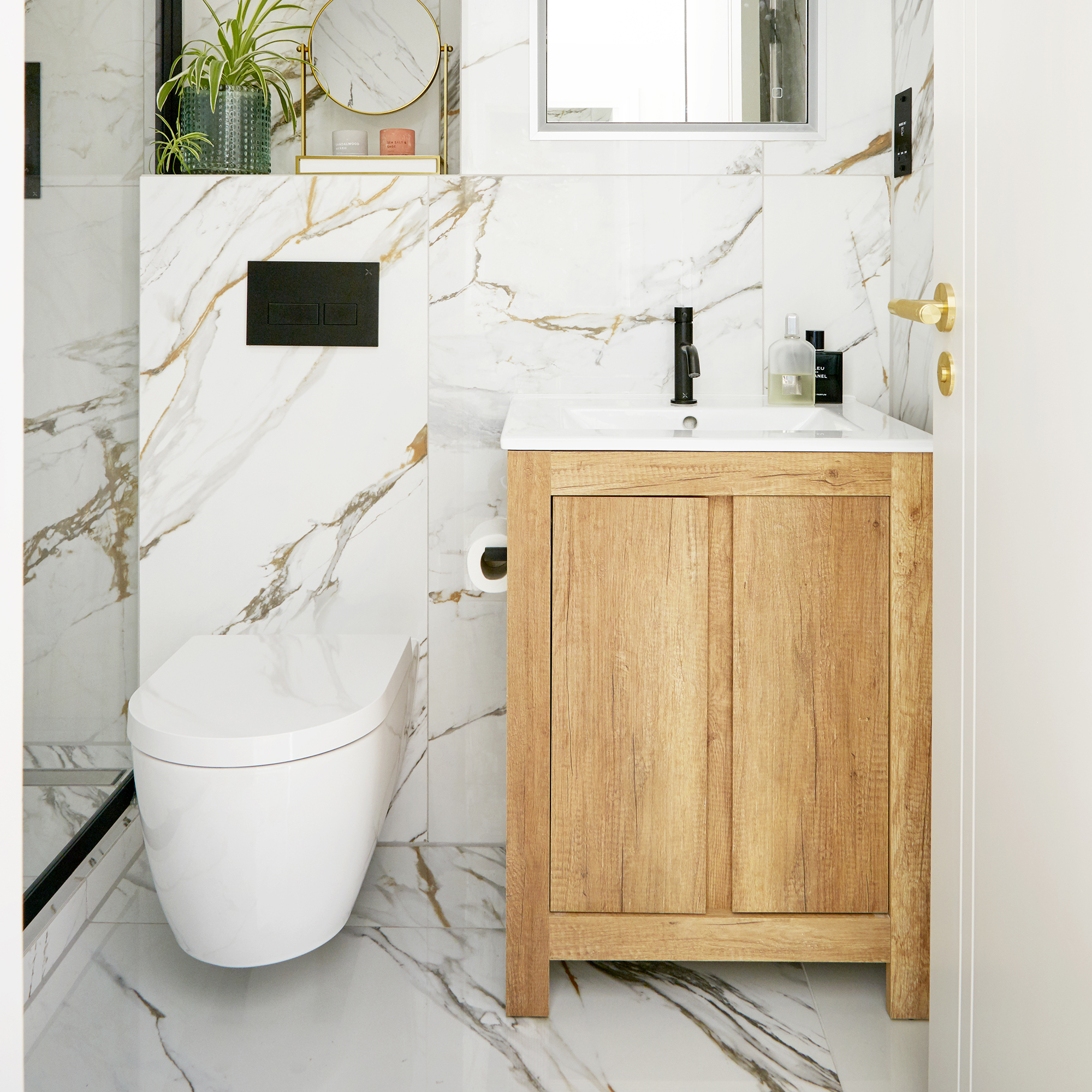
Storage is the key to a successful bathroom – and no, a minimal glass shelf won’t be enough! Toiletries never display well (unless you’ve taken out shares in Aesop or Jo Malone), nor do shampoo bottles standing on the floor of the shower. A substantial vanity with space for extra towels is a smart buy, plus any kind of storage unit too. Here the homeowner has transformed two simple bookcases into bathroom storage to hide away their toiletries.
'Mirrored cabinets will allow you to store products, as well as charge toothbrushes and electric razors,' advises Chris from Ripples. 'Niche storage in the walls will also ensure that you can store bottles discreetly when in the shower.'
'The least thought about part of how to plan a bathroom is often storage - finding solutions to bathroom storage can often be tricky but with some careful consideration, there’s actually a multitude of options for storing your products, advises Fabrizio Costingo, product designer at Lusso Stone. 'A vanity unit doubles up as a practical storage cabinet, whilst also creating a statement in the room. Or, if your area is long and narrow, a wide set of cabinets that can sit against a wall could be a good use of space, again, doubling up as both storage and a ‘getting ready’ station too.'
9. Consider your bathroom lighting
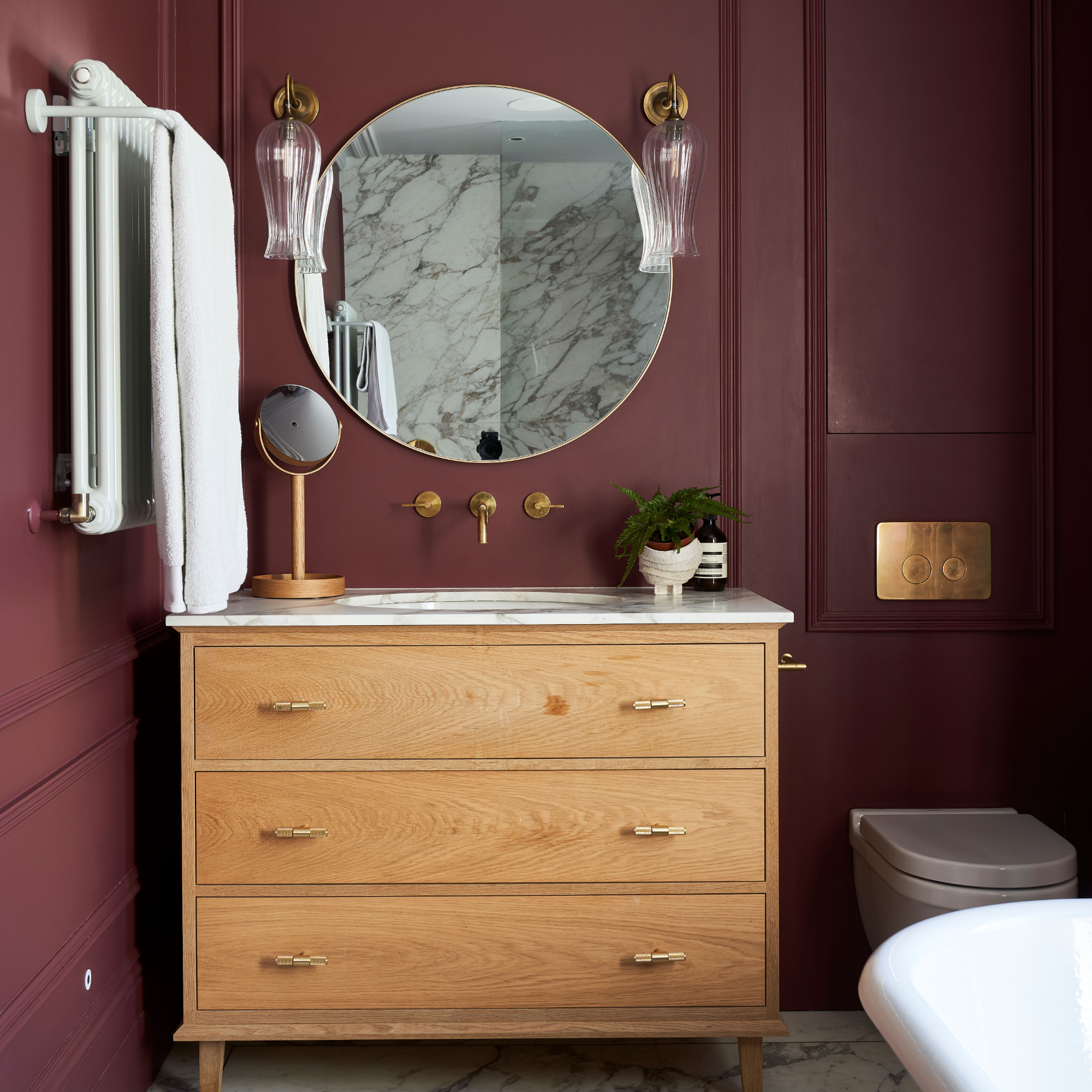
As bathrooms are often placed next to the bedroom, bathroom lighting ideas should be considered carefully. You don't want bright lights flashing on in the middle of the night – it's not comfortable for the person taking a trip to the bathroom, or for the person asleep next door bedroom.
'I would suggest that you consider having different levels of lighting,' suggests Chris. 'Then, if you're taking a late-night trip to the bathroom, you can turn on the low-level lighting without waking up others – or yourself – too much!'
'Some of the lighting could be operated by a motion sensor, meaning there is no fumbling around for a light switch.'
Phil advises, 'As bathrooms have specific requirements with electrics, have a chat with your electrician to make sure the lighting complies with strict UK requirements.'
10. Tiles are the easiest way to follow trends
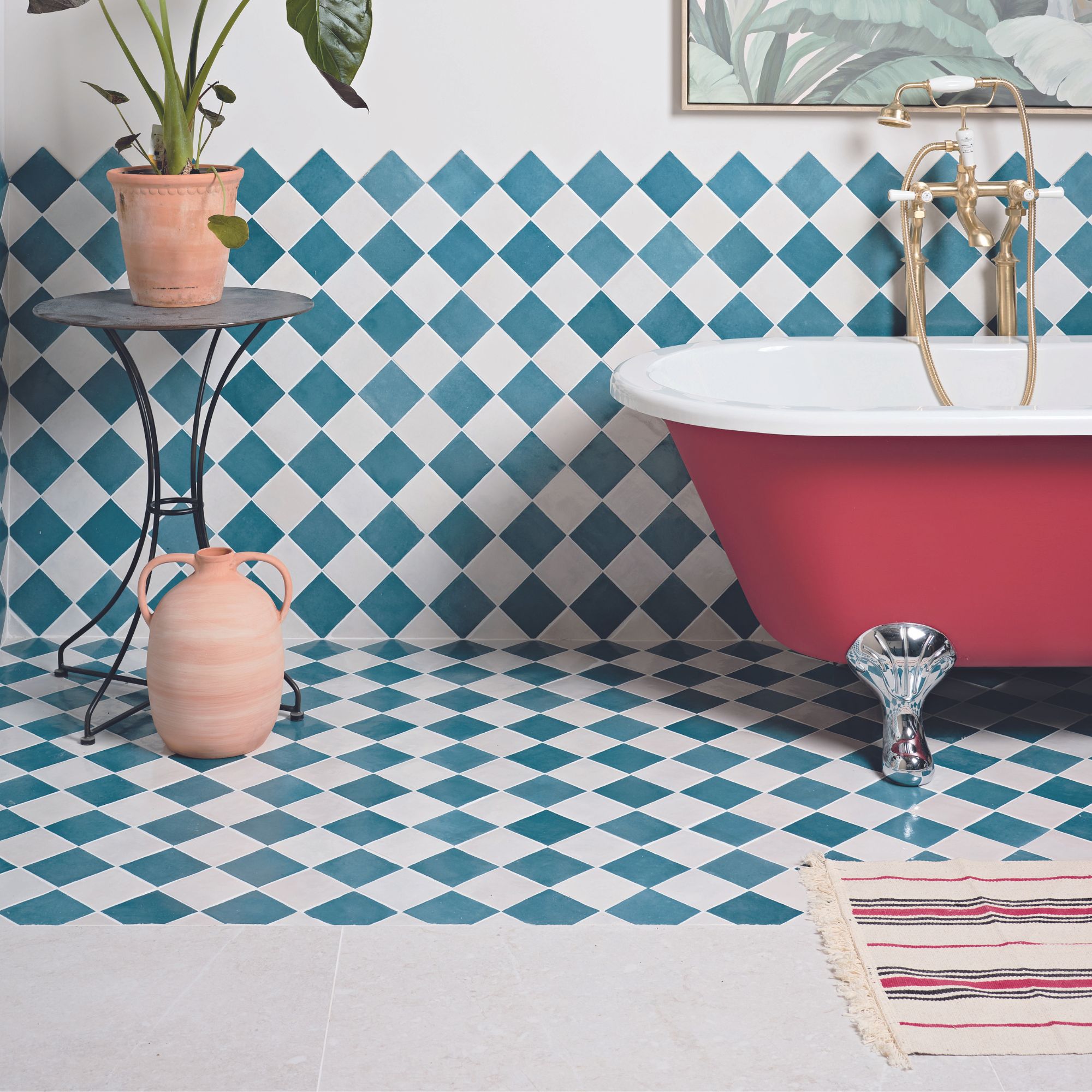
Surfaces make or break a bathroom: there’s little that feels more dated than cruddy, worn-out vinyl. One current trend is for graphic ceramics – say, a patchwork of decorative geometrics or a striking hexagonal design.
You’ll achieve maximum impact with a floor-to-wall seamless feature, but you can also opt for a feature wall or floor. Think about your room proportions before choosing your bathroom tile ideas. Very decorative designs can be too busy for a small space, whereas they could be an ideal way to add interest and warmth to a large bathroom.
11. Mull over your colour choices
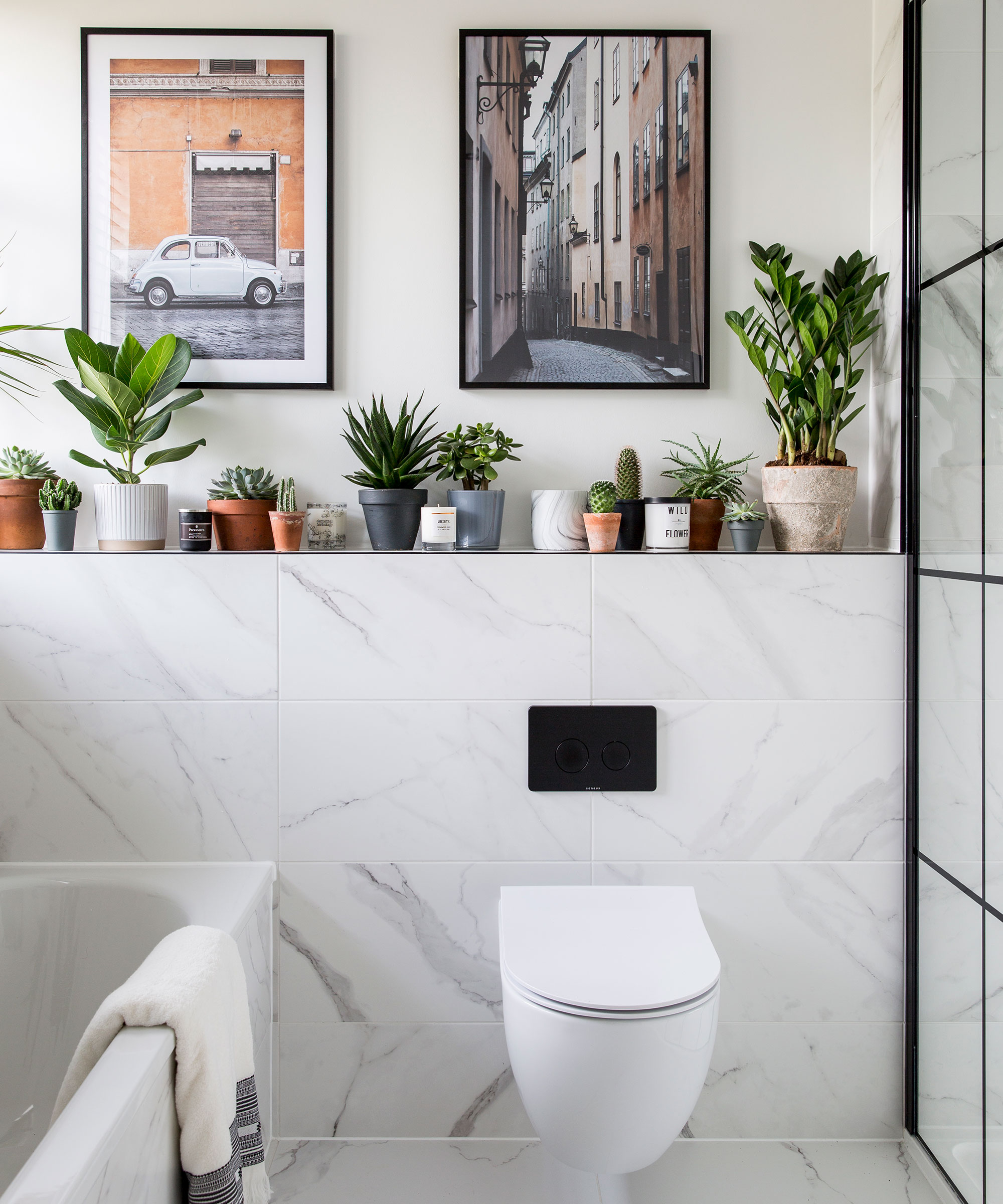
'Colour is a crucial element to consider with how to plan a bathroom; you can change the colour of painted walls and wallpaper quite easily, but tiles and bathroom hardware is there to last,' says Fabrizio from Lusso Stone.
'As we associate these spaces with cleanliness, freshness, and relaxation, the most popular bathroom colour schemes tend to reflect these qualities which is why crisp whites and warm off-whites are enduringly favoured in many homes, along with neutral shades such as soft grey and stone. These lighter shades offer more practicality and versatility and can help to increase the sense of space.'
Don't forget you can add in colour through accessories like artwork or even a collection of plants. Things that are inexpensive to buy and easy to change are great for giving your bathroom a new look.
12. Finalise a budget
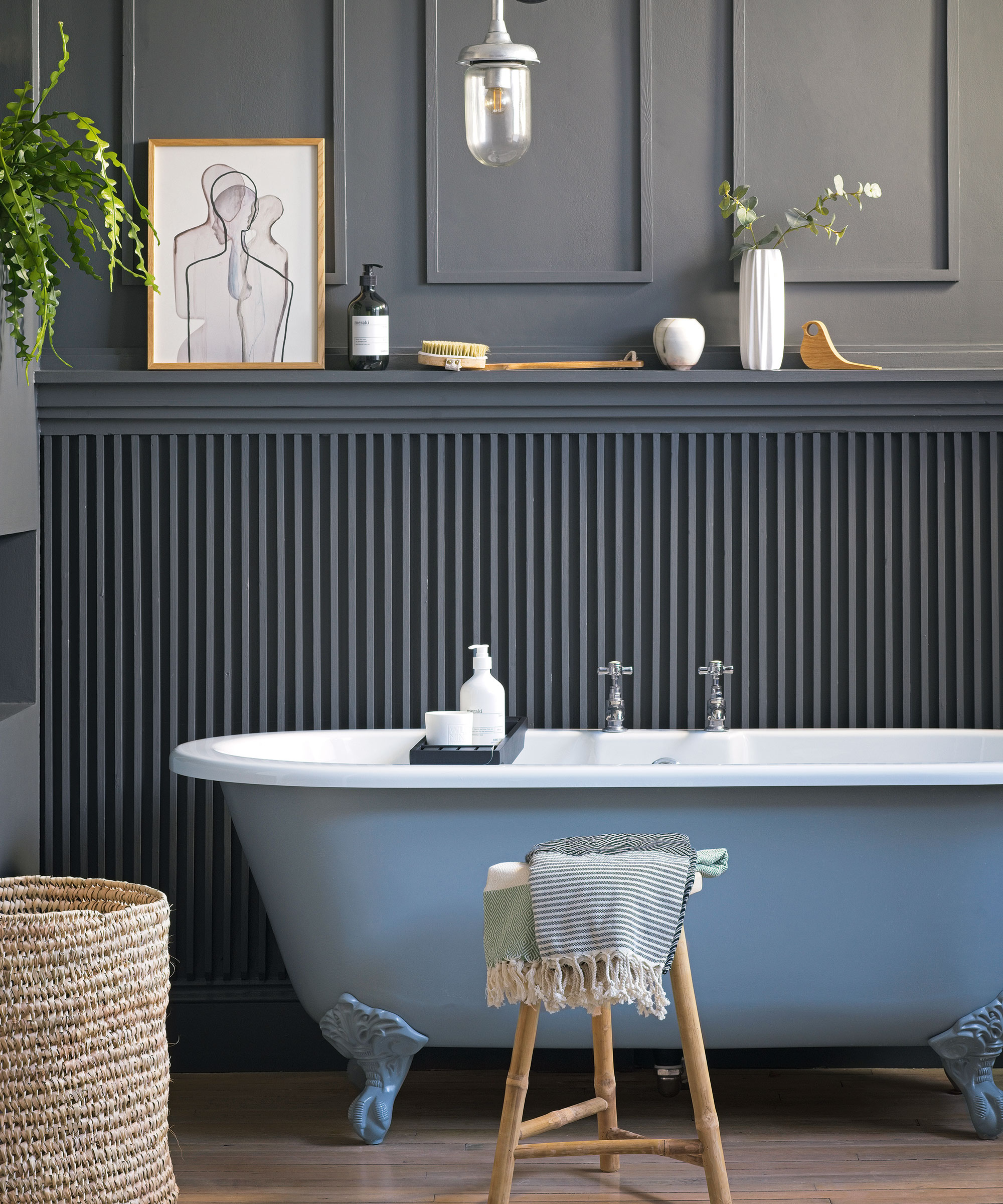
Deciding on a budget in advance means you can prioritise where to spend and where to save. And the good news is that it doesn’t have to cost thousands to create a spa feel. Invest in just one beautiful piece, such as a freestanding bath (which you can pick up for under £500) and show it off against a more budget bathroom ideas elsewhere.
'Set yourself a budget and be realistic. It is easy to overspend, so make sure you consider all aspects of bathroom design, from plumbing and electrical work to tiling and decorating,' advises Faye from Britton. 'Budget is also important if you plan on selling your house in the future. After all, you want to ensure you don’t invest more than you are likely to recoup.'
Bear in mind you also need to allocate some money to practical elements. You might need a larger water tank if you are planning a rainfall shower, and a water softener can be a smart idea to prevent the build-up of limescale.
13. Decide what level of service you need

This will largely be dictated by your budget. Some bathroom companies offer a turn-key solution, with everything from how to plan a bathroom and installation to decorating included in the price. While this isn't the cheapest option, it can repay in terns of the speed and ease of your project.
Alternatively you can design the space yourself, buy your own fittings, and hire a plumber or builder to work to your plan. While you have to ensure you get the layout right, and it will take more time to source products, it should work out cheaper in the long run.
Of course, nothing beats seeing products in the ‘flesh’ so put time in to visit plenty of showrooms. Don't be afraid to get in the bath and test it for comfort right there in the showroom, and feel for furniture and taps for build quality.
Get quotes from at least three fitters, making sure you’ve been specific about every element of the project. This will avoid added costs later.
14. Organise your tradespeople
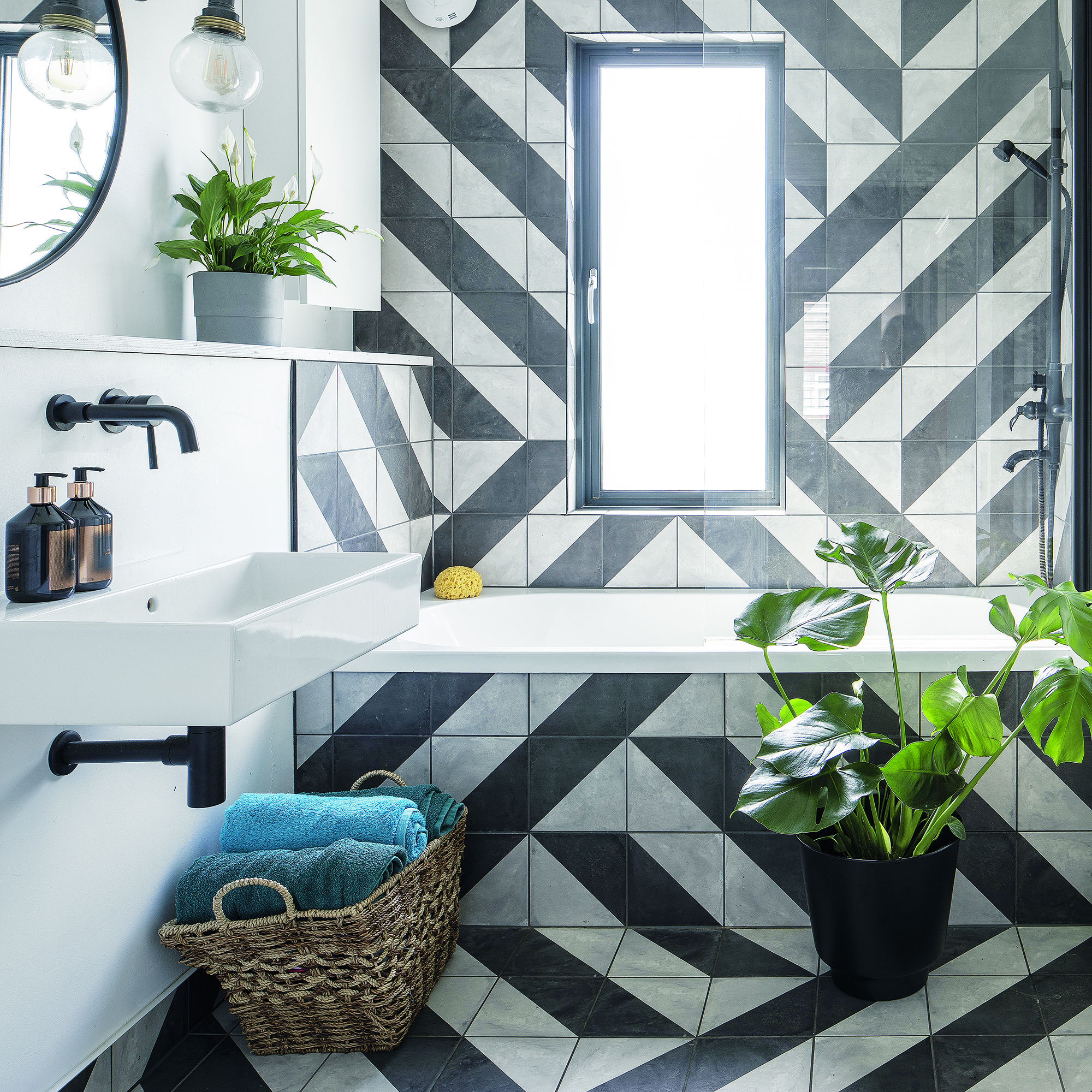
Get recommendations from friends and family about fitters. Always ask for references and make sure the person you choose is some one you trust and – importantly – like, as they will be in your home for a week or so. Remember, the best price might not always result in the best service.
If you're knocking down walls, moving or adding windows, or putting in new joists, check with your local building control office about whether you need Building Regulation approval.
Buying your suite and fittings through your builder might allow you to take advantage of trade discounts. Some bigger bathroom suppliers offer significant savings to the trade, as well as fast delivery and product support. Don't forget, though, that your fitter will probably take a small cut for the time and effort of ordering for you.
Regardless of whether you are buying from a high-street store or a high-end brand, factor in delivery times. Big name manufacturers might take three or four weeks to deliver, while luxury brands can take around eight weeks.
When placing your orders, don’t forget the peripherals, such as waste traps for the bath and sinks and try to schedule delivery to coincide with when the builder is on site otherwise you could have items cluttering up the house. Or, worse still a builder with nothing to fit. Give yourself plenty of wriggle room to avoid having contractors twiddling their thumbs on site.
TOP TIP: Double check the returns period BEFORE you place your order so you know how long you have to report anything that's not right. Take the time to check the condition of your fixtures and fittings as soon as they are delivered.
15. Survive the work
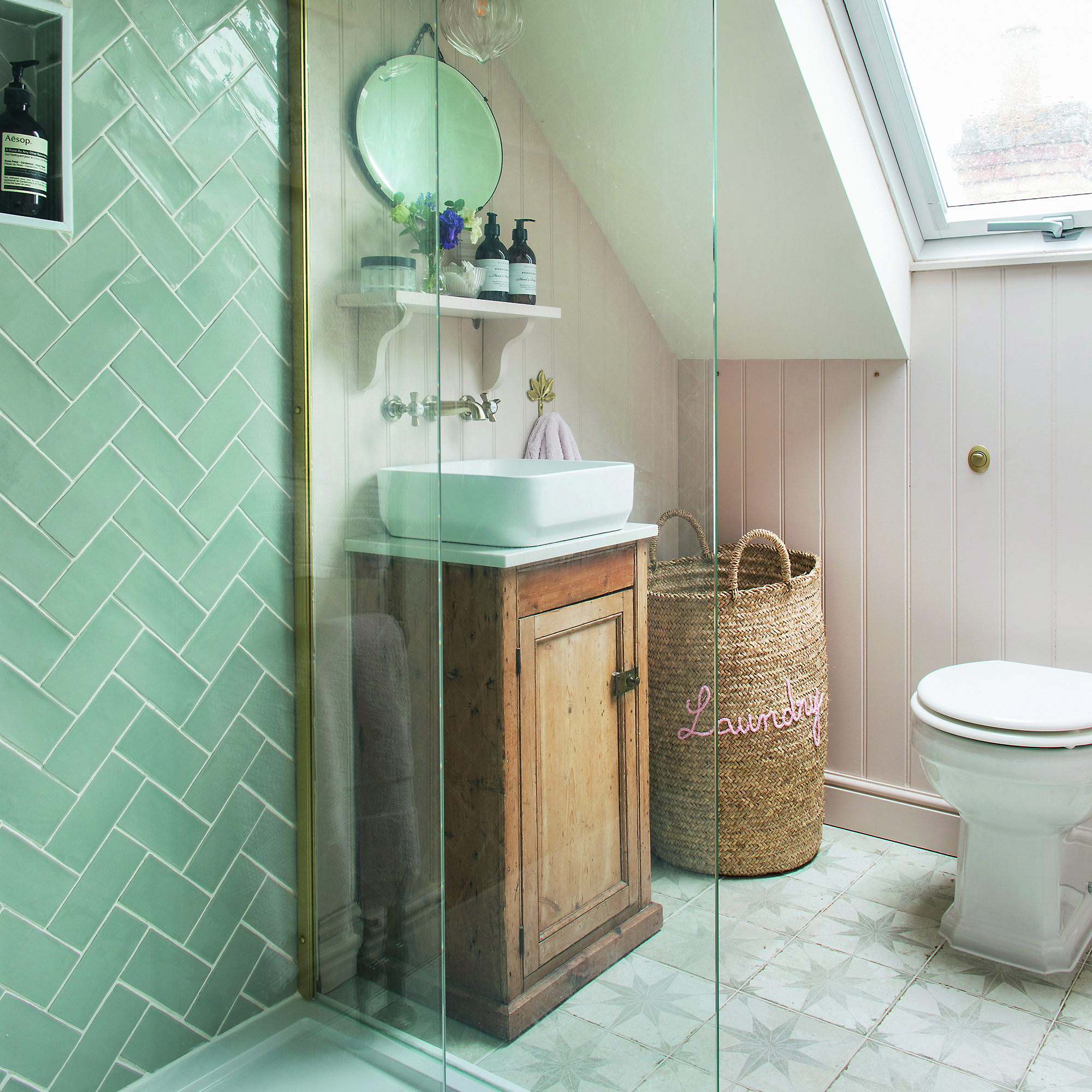
You might usually only make it to the local gym once a month, but that will certainly change if you plan to rip out the only bathroom in the house; you’ll find those changing rooms quickly take on a new appeal!
How long you’ll have to cope without a shower or bath depends on the scale of the work – a spruce job might only take a matter of days, but if you are planning to move fittings or relocate plumbing, account for significantly longer.
If you don’t have a gym membership, your only option might have to be chez a friendly neighbour, so start smiling when you pass in the street well in advance of any work. Believe us, dry shampoo can only go so far.
You'll also want to take steps to minimise the inevitable mess. Cover stairs and hallway floors with old dust sheets to protect them while products are being taken through the house. Ask for any cutting of tiles and plasterboard to be done outside to minimise dust, and seal off doors to any bedrooms using masking tape to keep them pristine.
Armed with all our advice, it should be easier than ever to create the bathroom of your dreams.
FAQs
What is the best way to layout a bathroom?
Your layout is going to be largely dictated by the shape and size of your bathroom, and the way in which you use it too. If it's a family bathroom, then a bath is important, but if it's an ensuite, then a large walk in shower might be better.
'Before you decide how to plan a bathroom, draw out a rough plan of your existing room on graph paper, using metric measurements and noting the location of windows and doors,' advises Faye from Britton. 'Create cut out shapes (to-scale) of every fixture you want in the room - bath, basin, toilet, and shower enclosure etc. You’ll then be able to rearrange items on your room plan until you find a layout you like.'
'If possible, position your bath so it’s the first piece seen when you open the door.' adds Phil from The Albion Bath Co. 'Bath tubs are now considered decorative as well as functional, so use the bath as a feature piece. Conversely, position the toilet in a discreet area but give thought to the soil pipe routing.'
“When it comes to deciding where you’re going to position your bathroom fittings, the best tip is to think about how they're used and in what order. With this in mind, we would usually recommend that the sink or basin is placed closest to the door, as it is often the last stop in most bathroom routines. The toilet and other fittings can then be further into the room. This not only provides more privacy but saves you from walking through puddles left behind by people stepping out of the bath of shower.'
Always think about where the existing soil pipes are, as moving these can be costly and an added expense you don't need.
Where do you start when designing a bathroom?
Start by thinking about what you want, verses what you need and get the family involved too. You might be lusting over a deep, freestanding bath, but your partner might want a smart, walk in shower. Once you have a list of your wants and needs, think about your budget. While decorative items like paint and wallpaper can be kept fairly cheap, sanitaryware, and any sort of smart tech can quickly cause the budget to go off course.
Also you'll need to be practical with how to plan a bathroom. 'Consider how your bathroom will be used, and all the different people who will use it,' suggests Faye from Britton. 'If you’re designing a family bathroom, it will need to be hardwearing and low maintenance. It will require practical products, lots of storage, and age-proof add-ons (such as anti-slip materials and anti-scald shower valves). If you’re planning an adult-only ensuite, you can put practically aside, in favour of luxurious fittings and high-tech touches.'
'The first thing to always think about is what do you want your bathroom for?,' says Fabrizio from Lusso Stone. 'Is it going to be your retreat away from the hustle and bustle of life or is it merely a functional space? This changes how to utilise your space and the light in your bathroom. If it is your retreat, think about what colours calm you down, where you want your bath to be facing and places for candles, bath soaks and more. If it is a more practical space, then clean white lines, multipurpose cabinets and spaces for guest towels and the like are crucial.'
How do you design a bathroom?
If budget allows, get a bathroom designer involved with how to plan a bathroom, as they will be able to make the most of your space and guide you through the process. If budget doesn't allow for this, gather all your ideas and sit down with a calculator and work out what you need to buy, what labour you might need to pay for and what time frame you need the work done.
It's also worth thinking about what style bathroom you want and whether it fits into the character of your home. A country-cottage style bathroom is great in just that, but might not be so achievable in a contemporary urban flat.
'What colour scheme do you want? Are there bathroom trends excite you? Do fixtures matter most to you? Deciding these design elements is a key part of bathroom planning. If you’re short of inspiration, look to interior magazines, Instagram, and Pinterest. You can even take photos of your favourite hotel and restaurant bathrooms, if they have an aesthetic style you want to emulate,' says Faye from Britton.
But that said, whatever design you go for, make sure you love it before you begin as it could be costly to change things at a later date!
Now you're armed with all of the tips you need to plan a bathroom, all that's left to do is check out the top bathroom trends to see which style takes your fancy.

Amy Cutmore is an experienced interiors editor and writer, who has worked on titles including Ideal Home, Homes & Gardens, LivingEtc, Real Homes, GardeningEtc, Top Ten Reviews and Country Life. And she's a winner of the PPA's Digital Content Leader of the Year. A homes journalist for two decades, she has a strong background in technology and appliances, and has a small portfolio of rental properties, so can offer advice to renters and rentees, alike.
- Holly CockburnContent Editor
- Holly WalshContributor